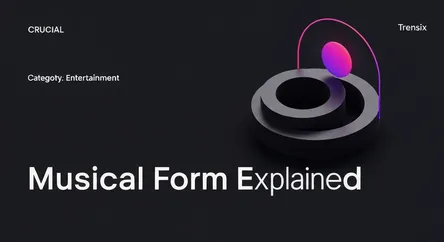Entertainment
Musical Form Explained

Discover the secrets of musical form, the underlying structure that shapes our favorite songs. Learn about common patterns and their impact on music.
What is it?
Musical form is the overall structure or plan of a piece of music. It describes the layout of a composition as divided into sections. Think of it as the architectural blueprint for a song, guiding how melodies, harmonies, and rhythms are organized over time. Common forms include the verse-chorus structure prevalent in pop music, the 12-bar blues progression, the AABA form often found in jazz and show tunes, and the sonata form used in classical music. These structures rely on principles of repetition, contrast, and variation to create a cohesive and engaging listening experience.
Why is it trending?
The concept of musical form is gaining popularity as music production and analysis become more accessible. On platforms like YouTube and TikTok, creators and music theorists are deconstructing hit songs to reveal their structural secrets, making music theory less intimidating. This trend empowers aspiring songwriters and producers by providing them with proven templates for crafting their own music. The desire to understand the "why" behind a catchy song has led to a renewed interest in the fundamental building blocks of music, with form being a key element.
How does it affect people?
For listeners, musical form works on a subconscious level, creating expectations and a sense of familiarity that makes music enjoyable and memorable. A predictable chorus provides a satisfying release, while a contrasting bridge offers a fresh perspective. For creators, form is an essential tool for storytelling and emotional guidance. It provides a framework to build tension, develop musical ideas, and take the listener on a compelling journey. By mastering form, artists can effectively communicate their vision and craft songs that resonate deeply with their audience.